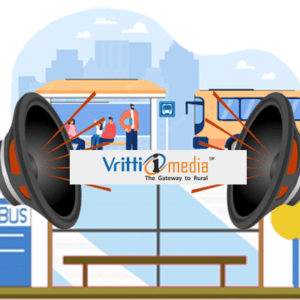By, Rajender Chhabra
Rural market is expanding consistently from the past one decade or more. So rural marketing consulting agencies are growing day by day. Out of the total consumers in India, rural consumers have Lion’s Share of 65% approximately. Reports say that the revenue contribution from this segment has recorded 625 Billion Dollars which was around 25 Billion earlier. Rural market is shining because of the increasing allocation of budgets for the segment. If we take the example of the state of Rajasthan alone, then the past 20 years brought a transformation there. Coming out of the conventional image of a Backward State, it has marched successfully on the path of economic development.
Facts and figures substantiate the facts. GDP of the state touches the figure of 5440 Million from 795 Million, and the contribution of the rural market is substantial in it. With such an enthusiastic economic situation, the state conquers new heights of economic growth. The mindset of people is changing fast and the markets in the interior areas are also buzzing with consumers.
With the change in the market dynamics, entrepreneurs are also changing pretty fast. Big brands that used to consider the rural market inferior changed their marketing strategy. Marketing geeks feel that the rural consumers are different and it is not the right policy to take them for granted. They are relatively slow in changing their notions, and it is the companies that need to alter their strategies to suit the consumers.
Still, a long way to go
The rural market gets the benefit of infrastructure development and telecommunication revolution. A survey indicates that many companies haven’t reached to this vibrant market till date. They were greatly successful in the urban market by based on the analysis of consumer behavior, but the same is not valid for the rural market. Moreover, it is a risk prone market also because of the huge size and spread. Conveying the product information is a mammoth task.
However, a few brands recorded 10 to 20 percent increase in the niche. Rural marketing consulting agencies feel that it is the high time to take the market into consideration while deriving the mainstream marketing strategy. Companies that sensed it and altered their thinking process accordingly could do well. As the middle and higher income strata occupy 17 percent of the total segment, there is a big scope for lifestyle related products and services.
Conventional methods are scoring high
The recent survey of NCAER says that companies are nowadays analyzing the market in-depth and launching products after understanding the lifestyle of consumers. Marketing research companies are spending quite a lot time in the countryside for it. The research says that mouth-to-mouth publicity is the most effective marketing method there. Hence, connecting to the consumer directly helps a lot.
Ankit Jain, Director ARIL InfoTech says that information revolution is still miles away from the villages. Even today also, more than half households in the interior areas don’t have TV or Newspapers. Hence, ARIL tried some innovative ways of promoting their product. They sent mobile vans in 135 villages equipped with the puppet show, folk dance and music, and the famous ‘Kachchi Ghodi Dance’. The campaign was more successful than expectations in establishing the brand in the market. Ankit says that we never thought about the rural market so intensely earlier. It is true that we can’t change the mindset of consumers, but it is very much possible to find out convenient ways of establishing a dialogue.
Companies are using NGOs to reach the remote consumers. Colgate-Palmolive and Tata have been using NGOs to promote their products. Street plays are also being used to promote the products.
It is important to understand the need and the lifestyle
Rajiv Soni of JK Cement feels that marketing experts are surprised to see the immense growth in the rural sector. Therefore, they are finding effective ways of reaching the last consumer in the queue. If you look at the attitude, then the rural consumers are much patient than the urban ones. It is needless to say that the entrepreneurs are also required to be equally patient. JK Cement actively participated in activities that are related to the social responsibility, and it resulted in a fabulous sales growth. Companies like Honda Motors used traditional attire to appeal the masses. Their marketing team does an in-depth research of the dialect, lifestyle, and living standard before entering a virgin market.
Who are the biggest beneficiaries?
HLL, Philips, and Colgate are the frontrunners whereas LG, Nokia, Samsung, Voltas, P&G, Pepsico, Nestle and ITC are expanding their market share rapidly. A few companies have decided to spend 2 percent of their budget in the rural segment. Today, 40 percent of the FMCG revenue is being contributed by this market, but very soon it is expected to reach up to 60 percent. Not only low-cost products but expensive lifestyle products are also getting popular in the rural areas pretty fast.
Marketing head of Miraj Marketing, Mr Pradeep Ametha says that the speed of growth in the rural market is almost double than the urban one. In the recession time also, it recorded 6 percent growth year on year. Not only that, but there is a major change in the approach also. Now, the consumers focus on quality instead of price. FMCG companies are able to record 14 to 15 percent growth in this market as compared to 12 percent in the urban market. No wonder, all big and small companies are running to the villages.
Rural consumers are different
The government is putting a great emphasis on the development of the rural areas. There has been a significant provision in the Union Budget for the rural India. There is a huge cash flow because of various loan relief schemes announced by the government. Still, the rural people are more concerned about the price and not quality, the perception is changing rapidly. As the middle-class population increases, there is a significant change in the mindset. Products and services should be the best in quality, but without compromising on prices.







